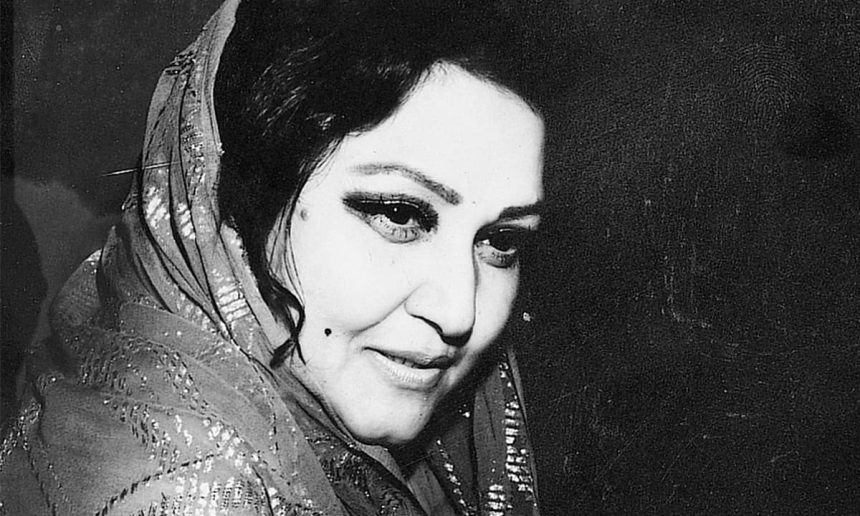Imagine a voice so powerful it could stir the soul of a nation, a presence so magnetic it defined an era. Noor Jehan, fondly dubbed the “Queen of Melody,” was that voice and presence, a cultural titan whose music and charisma transcended borders, generations, and genres. Born in British India and later becoming the heartbeat of Pakistani cinema and music, Noor Jehan’s legacy is a tapestry of artistry, resilience, and trailblazing spirit. From her early days as a child prodigy to her reign as a playback singing legend and Pakistan’s first female film director, her story is one of passion and perseverance.
This article dives deep into Noor Jehan’s life, exploring her rise from humble beginnings to global stardom, her reinvention in a new nation, and her lasting influence on South Asian music and culture. Whether you’re a lifelong fan or new to her magic, this journey through her life will reveal why she remains an icon—and how her work continues to inspire.
Early Life and Musical Roots
A Humble Beginning in Kasur
Noor Jehan was born Allah Rakhi Wasai on September 21, 1926, in Kasur, Punjab, in what was then British India. The youngest of 11 children in a musical family, she was surrounded by the sounds of folk and classical music from an early age. Her father, a professional singer, and her mother, who nurtured the family’s artistic talents, recognized Allah Rakhi’s gift early. By age five, her voice—clear, emotive, and unusually mature—hinted at the legend she would become.
Training and First Steps on Stage
As a child, Allah Rakhi performed at local gatherings, her natural talent catching the eye of mentors in Kolkata, then a hub of India’s performing arts. She trained rigorously in Hindustani classical music under renowned ustads, mastering the nuances of ragas and vocal control. At just nine, she debuted on stage, earning the nickname “Baby Noor Jehan.” These early performances laid the foundation for her versatility, blending classical precision with the emotional depth of folk and devotional music.
Rise to Stardom in British India
A Star is Born
Noor Jehan’s entry into the film industry was nothing short of meteoric. At 12, she debuted in the Punjabi film Gul-E-Bakawli (1939), captivating audiences with her acting and singing. Her breakthrough came with Khandan (1942), where her soulful renditions and on-screen charm made her a household name. By the time she starred in Zeenat (1945), she was a leading actress, her voice defining the golden era of pre-partition Indian cinema.
A Signature Style Emerges
Noor Jehan’s vocal style—rich, versatile, and emotionally charged—became her hallmark. She effortlessly navigated ghazals, thumris, and folk tunes, infusing each with a distinct warmth. Her contemporaries, including early Bollywood stars, admired her ability to adapt to any genre, setting a benchmark for playback singing. Her influence reshaped the industry, inspiring composers to craft songs that showcased her range.
Migration and Reinvention: Noor Jehan in Pakistan
A New Chapter Post-Partition
The 1947 Partition of India was a turning point for Noor Jehan. Leaving behind a flourishing career in Bombay, she migrated to Lahore, Pakistan, with her family. The move was fraught with challenges—Pakistan’s nascent film industry lacked the infrastructure of Bollywood. Yet, Noor Jehan saw opportunity where others saw obstacles, determined to rebuild her legacy in a new nation.
Pioneering Pakistani Cinema
In 1951, Noor Jehan starred in, sang for, and co-directed Chan Wey, Pakistan’s first feature film. This historic achievement made her the country’s first female film director, a bold step in a male-dominated industry. Hits like Dupatta (1952) and Ghalib (1961) followed, cementing her status as a leading actress. By the late 1950s, she transitioned to playback singing, her voice becoming the soul of Pakistani cinema.
Musical Achievements and Iconic Contributions
A Prolific Recording Career
Noor Jehan’s discography is staggering—over 10,000 songs in Urdu, Punjabi, Sindhi, and more. She holds the record for the most film songs by a Pakistani playback singer, a feat unmatched to this day. Her ability to convey raw emotion made songs like “Mujh Se Pehli Si Muhabbat” and “Ae Watan Ke Sajeelay Jawanon” timeless classics.
Patriotic Anthems and National Pride
During the 1965 Indo-Pak war, Noor Jehan’s patriotic songs became anthems of resilience. Tracks like “Ae Watan Ke Sajeelay Jawanon” rallied soldiers and civilians alike, earning her the title “Melody Queen of Pakistan.” Her music fostered unity, proving art’s power to uplift a nation.
Mastery Across Genres
Noor Jehan’s versatility shone in her command of ghazals, classical compositions, and folk melodies. Collaborations with poets like Faiz Ahmed Faiz and composers like Nisar Bazmi produced masterpieces that blended literary depth with musical brilliance. Her ability to adapt her voice to each genre set a standard for playback singers across South Asia.
Cultural Influence and Legacy
Awards and Recognition
Noor Jehan’s contributions earned her numerous accolades, including the Presidential Award for Good Performance, Pride of Performance, Sitara-e-Imtiaz, and Lifetime Achievement Awards. These honors reflect her impact not just as an artist but as a cultural icon who shaped Pakistan’s identity.
Inspiring Future Generations
Noor Jehan’s influence extended to singers like Lata Mangeshkar, who cited her as an inspiration. Her vocal techniques—vibrato, emotional inflection, and dynamic range—became a blueprint for playback singing. Even today, artists across India, Pakistan, and the diaspora draw from her legacy.
Later Life and Media Presence
In her later years, Noor Jehan embraced television and radio, hosting shows and mentoring young artists. Despite health challenges, including diabetes and heart issues, she remained active until her passing on December 23, 2000. Her final performances retained the same passion that defined her youth.
Noor Jehan’s Enduring Appeal
Timeless Music for New Generations
Noor Jehan’s songs remain staples at weddings, cultural events, and radio stations across South Asia. Modern artists have rerecorded her classics, introducing her voice to younger audiences. Streaming platforms like Spotify and YouTube report millions of plays for songs like “Dil Ka Diya Jalaya” and “Chandni Raatein.”
Beyond the Music: Noor Jehan’s Broader Impact
Breaking Gender Barriers
As Pakistan’s first female film director, Noor Jehan shattered stereotypes in a conservative industry. Her success inspired women to pursue careers in film, music, and beyond. She advocated for greater female representation, mentoring aspiring artists and proving women could lead creatively..
Conclusion
Noor Jehan’s journey from a child prodigy in Kasur to the Queen of Melody is a testament to talent, resilience, and reinvention. Her voice defined eras, her films broke barriers, and her legacy continues to inspire artists and audiences worldwide. From patriotic anthems to soulful ghazals, her music remains a bridge across generations and borders. As we celebrate her contributions, let’s honor her by exploring her songs, supporting women in the arts, and embracing the power of creativity to unite and uplift.







